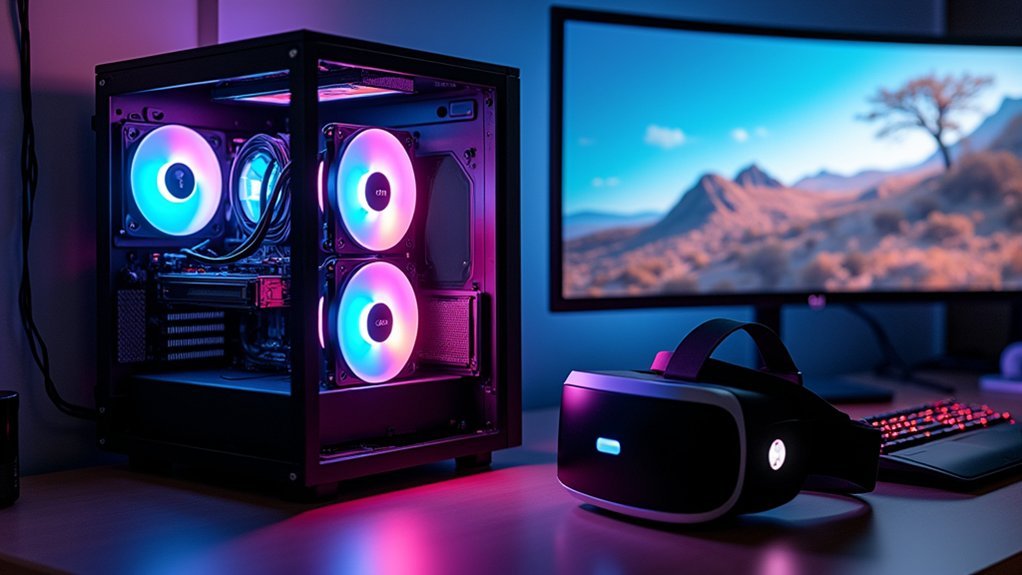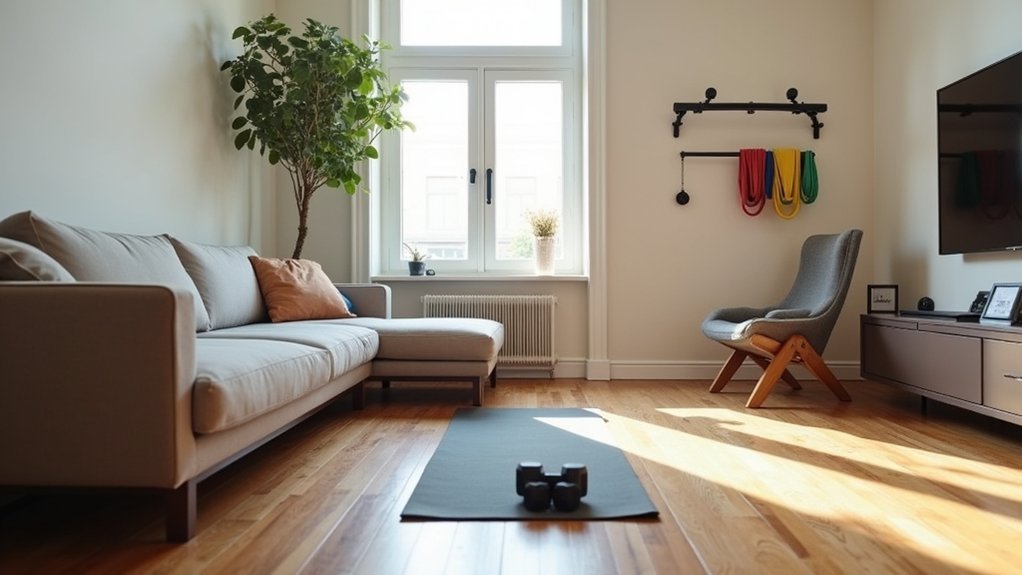You can build a VR-ready PC with three distinct approaches based on your budget and performance needs. Start with a budget-friendly $700 build using an Intel i5-4590 and GTX 970 for reliable entry-level VR gaming. Upgrade to a mid-range $1,200-$1,500 setup featuring an i5-12600K and RTX 3060 for enhanced visuals. Go high-end with a $2,500-$4,000 build using an i7-13700K and RTX 3080 for maximum immersion. Each approach offers specific advantages that’ll transform your gaming experience.
Budget-Friendly VR PC Build for Entry-Level Gaming

Building your first VR-ready PC doesn’t require breaking the bank – you can create a capable entry-level setup for around $700 that’ll handle most VR experiences smoothly.
Start with an Intel Core i5-4590 CPU paired with an Nvidia GTX 970 GPU to meet minimum VR requirements effectively. Include 8GB of DDR3 RAM, though upgrading to 16GB enhances multitasking without major cost increases.
The Intel i5-4590 and GTX 970 combo provides reliable VR performance while 16GB RAM optimizes multitasking capabilities.
You’ll want a 1TB HDD for storage, but adding a 250GB SSD dramatically improves loading times and system responsiveness. Choose a reliable power supply like the 550W EVGA SuperNOVA 80+ GOLD, providing ample wattage for future upgrades.
This budget-friendly configuration delivers solid VR gaming performance while keeping costs manageable for entry-level enthusiasts.
Mid-Range VR PC Build for Enhanced Performance
While entry-level builds get you into VR gaming, stepping up to a mid-range configuration opens up considerably better performance and visual quality for around $1,200-$1,500.
Your mid-range VR PC build should feature an Intel Core i5-12600K or AMD Ryzen 7 5800X processor for smooth performance in demanding applications. The Nvidia RTX 3060 or AMD Radeon RX 6700 XT delivers high frame rates and handles immersive VR visuals effectively.
You’ll want 16GB DDR4 RAM for peak performance, though 32GB provides future-proofing. An NVMe SSD with 1TB storage dramatically reduces loading times, ensuring quick access to game files.
Finally, install a reliable power supply with minimum 750W capacity to support these high-performance components and allow future upgrades.
High-End VR PC Build for Maximum Immersion

When you’re ready to push VR gaming to its absolute limits, a high-end VR PC build costing $2,500-$4,000 delivers the premium performance that maximizes immersion across all modern VR titles.
A premium $2,500-$4,000 VR PC build unleashes maximum gaming performance and delivers unparalleled immersion across all modern virtual reality experiences.
You’ll need a powerful GPU like the Nvidia RTX 3080 or AMD Radeon RX 6800 XT for smooth rendering and high frame rates. Pair this with an Intel Core i7-13700K or AMD Ryzen 9 7900X processor to handle demanding physics simulations effectively.
Install 32GB DDR5 RAM for seamless multitasking and dual NVMe SSDs for faster loading times. Implement liquid cooling to manage heat during extended sessions.
Finally, invest in a reliable power supply like the Corsair AX1000 to guarantee stable power delivery to your premium components.
Frequently Asked Questions
How Much Does It Cost to Build a VR Ready PC?
You’ll need around $700 for a bare minimum VR-ready PC that runs games reliably. If you want smoother performance with better components, you’re looking at $900-$1000 total.
What Does a VR Ready PC Need?
You’ll need at least an Intel i5-4590 CPU, GTX 970 graphics card, 8GB RAM, SSD storage, and 550W power supply. These components guarantee you’ll handle VR’s demanding processing requirements smoothly.
How Do I Make My Computer VR Compatible?
You’ll need to upgrade your CPU to at least an Intel i5-4590, install a GTX 970 or better graphics card, add 8GB RAM minimum, use an SSD, and guarantee you’ve got a 550W power supply.
Is VR CPU or GPU Heavy?
VR’s primarily GPU-heavy since you’re rendering high-resolution images for both eyes simultaneously. Your graphics card handles the visual workload, while your CPU manages physics and object movements, making the GPU more critical for performance.





Leave a Reply